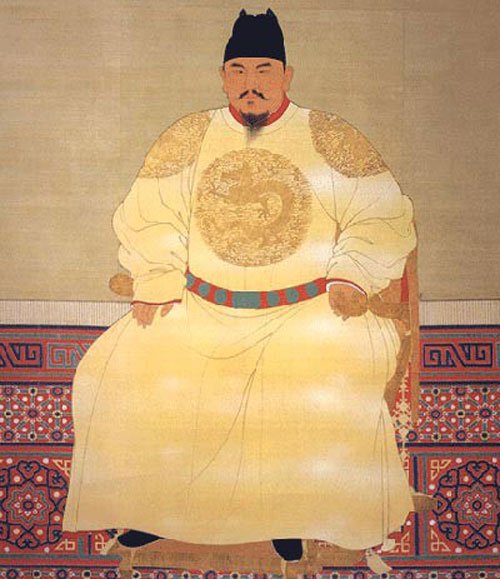The 'frightening' truth about the beautiful remains of Chu Nguyen Chuong's tomb
In the tomb of the famous emperor, the Ming dynasty contains the remains of many women and the mysteries behind them make many people startled.
Burial is a custom of burying the living according to the dead that appeared in ancient China. The object of this list may be the one the tomb owner loved while alive or a few lowly born slaves. This custom stems from the concept of "such a sound effect" , because the ancients believed that after the death, their souls would still exist in the afterlife.
In the Qin - Han period, this custom was very prevalent. After the Han Dynasty, this custom was gradually eliminated because of its barbarism and cruelty.

Minh Thai To - Chu Nguyen Chuong.
In the tomb of the famous emperor of the Ming Dynasty - Chu Nguyen Chuong appeared many remains of women. According to historical records, after the death of Chu Nguyen Chuong, the custom of burial customs was carried out like that of the Qin-Han period.
Although after the Han Dynasty, this custom was gradually eliminated but by the time Zhou Yuanzhang was in office, this custom began to be transmitted again. In 1395, when Qin Wang - Zhou Sang, the second son of the emperor, died, he ordered Wangfu and his son to be buried in order to help the son to be near and to be friends. from loneliness.

Chu Nguyen Chuong's Tomb. (Source: Internet).
Chu Nguyen Chuong died in 1398, Chu Doan Van ascended the throne. According to his grandfather's orders, the entire royal palace and women who have not given birth must die according to Minh Thai To Chu Nguyen Chuong. This command gave the government a color of mourning and resentment.
He was given poisonous wine, and he was given a 7-meter long white silk band. The royal concubines have the power to use all means to flee from death, while others for their own enemies force others to die. The death of the famously brutal and cruel emperor of the Ming Dynasty led to thousands of mournful cries at the time.
- Found the grave of Nguyen Binh Khiem's Process?
- 2,000-year-old tomb in Mexico
- The woman's remains have hair and nails left after 900 years
- Mystery about ancient tombs for hundreds of years of remains in Nghe An
- Find remains in the mysterious tomb of Alexander the Great
- Discover the mysterious tomb on the island of the refugees
- New discovery about the tomb of Dracula
- The 4,000-year-old couple is in a close posture in an ancient tomb full of gold
- The skeleton is nearly two meters in the tomb of 5,000 years in China
- The thousand-year-old remains of the couple buried in the same grave
- Found the tomb of the Nguyen Dynasty's wife at the construction site
- Excavation of the pre-Inca aristocratic tomb
 Discovered an ancient centipede fossil 99 million years old
Discovered an ancient centipede fossil 99 million years old Discovered bat-like dinosaurs in China
Discovered bat-like dinosaurs in China Discovered a 200-year-old bronze cannon of the coast
Discovered a 200-year-old bronze cannon of the coast Discover 305 million-year-old spider fossils
Discover 305 million-year-old spider fossils